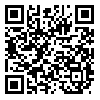جلد 16 -
جلد 16 - صفحات 352-333 |
برگشت به فهرست نسخه ها
Download citation:
BibTeX | RIS | EndNote | Medlars | ProCite | Reference Manager | RefWorks
Send citation to:



BibTeX | RIS | EndNote | Medlars | ProCite | Reference Manager | RefWorks
Send citation to:
Sayadnasiri M, Moridian M, Naji B. The Predictive Role of Quantitative Electroencephalography in Evaluation of Responsiveness of Obsessive-compulsive Disorder Patients to Fluvoxamine. BCN 2025; 16 (S1) :333-352
URL: http://bcn.iums.ac.ir/article-1-2532-fa.html
URL: http://bcn.iums.ac.ir/article-1-2532-fa.html
The Predictive Role of Quantitative Electroencephalography in Evaluation of Responsiveness of Obsessive-compulsive Disorder Patients to Fluvoxamine. مجله علوم اعصاب پایه و بالینی. 1404; 16 (S1) :333-352
چکیده:
Introduction: It is not surprising that an obsessive-compulsive disorder (OCD) patient does not respond desirably to the first choice of medication, and it may last up to one year to find the best treatment. According to the consequences of failed antidepressant therapy for OCD, any factor that can predict responsiveness would be of high importance. We investigated the potential predictive value of quantitative electroencephalography (QEEG) in the responsiveness of OCD patients to fluvoxamine.
Methods: We included 40 medication-free, non-depressed OCD patients assessed before the intervention and 6 weeks after that. Five minutes of opened eyes and closed eyes QEEG records were taken. The relative power of each frequency band was calculated for all electrodes. The patients received fluvoxamine, 150-300 mg per day. We used univariate analyses and multivariate logistic regression to compare the brain waves between responders and non-responders.
Results: Responsiveness was correlated with normal relative powers in FP1, FP2, FZ, and F3 and increased relative power in O1 in closed eyes condition, increased relative power of alpha in O1 and O2, and normal relative powers in FP1 and FP2 with open eyes. Unresponsiveness was correlated with increased theta wave in FP2, FZ, and F3, no change in the alpha wave in O1 with closed eyes, and increased alpha in the O1 and O2 in opened eyes condition.
Conclusion: The electroencephalographic waves of the medial-frontal area and occipital areas can be biomarkers to predict responsiveness to treatment with fluvoxamine.
Methods: We included 40 medication-free, non-depressed OCD patients assessed before the intervention and 6 weeks after that. Five minutes of opened eyes and closed eyes QEEG records were taken. The relative power of each frequency band was calculated for all electrodes. The patients received fluvoxamine, 150-300 mg per day. We used univariate analyses and multivariate logistic regression to compare the brain waves between responders and non-responders.
Results: Responsiveness was correlated with normal relative powers in FP1, FP2, FZ, and F3 and increased relative power in O1 in closed eyes condition, increased relative power of alpha in O1 and O2, and normal relative powers in FP1 and FP2 with open eyes. Unresponsiveness was correlated with increased theta wave in FP2, FZ, and F3, no change in the alpha wave in O1 with closed eyes, and increased alpha in the O1 and O2 in opened eyes condition.
Conclusion: The electroencephalographic waves of the medial-frontal area and occipital areas can be biomarkers to predict responsiveness to treatment with fluvoxamine.
نوع مطالعه: Original |
موضوع مقاله:
Cognitive Neuroscience
دریافت: 1401/5/29 | پذیرش: 1402/6/13 | انتشار: 1403/12/28
دریافت: 1401/5/29 | پذیرش: 1402/6/13 | انتشار: 1403/12/28
| بازنشر اطلاعات | |
 |
این مقاله تحت شرایط Creative Commons Attribution-NonCommercial 4.0 International License قابل بازنشر است. |





